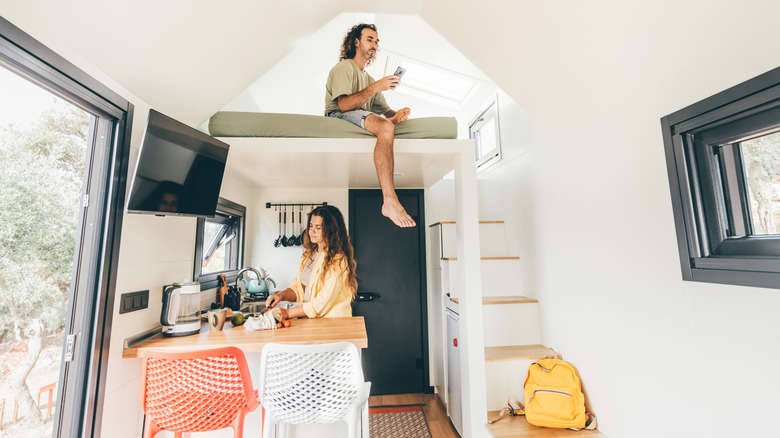Tiny Homes On The Rise Are Great News For Potential Buyers
While cozy cabins and cottages have been around forever, the modern tiny house movement became a big deal after the 2008 housing crash. Technically defined as any dwelling under 400 square feet, tiny homes are compact, efficient living spaces, carefully designed to maximize every square inch. They often feature clever storage solutions, multi-purpose furniture, and layouts that prioritize functionality over fuss. Whether built on a foundation or designed to roll on wheels, tiny houses are incredibly charming while also offering practicality. They are infinitely more affordable than traditional single-family homes because of lower construction, infrastructure, and utility costs. Thanks to first-time buyers struggling to qualify for sizable mortgages, downsizing retirees who want to simplify, and multi-generational families who need additional living space, the growing popularity of tiny homes is great news for potential buyers.
In today's housing market, tiny homes are more than just a quirky lifestyle choice. They are a practical solution, especially when buyers are faced with limited inventory, economic uncertainty, and a cultural shift toward freedom and flexibility. Tiny homes can serve as primary residences, but they're also ideal as guest houses, vacation rentals, backyard offices, or accessory dwelling units (ADUs) for family members who want to age in place. Once embraced mostly by dreamers chasing simplicity and sustainability, tiny homes now appeal to anyone eyeing their financial advantages. Today, you can buy a move-in ready tiny home on Amazon. And, if you'd rather leave the heavy lifting to the professionals, national home builders like Lennar, are starting to roll out communities with much smaller footprints in mind.
It's important to consider the pros and cons of tiny homes
Moving into a tiny home is a big decision, and it's important to consider the pros and cons before taking the leap. With traditional home prices continuing to soar, the affordability factor is hard to ignore. Investing in a tiny house can be a more realistic path to ownership for potential buyers who need a solution that's cheaper to build or buy. If you're downsizing, lower maintenance and utility costs can reduce financial stress and increase disposable income. And, when you're making a commitment to live a more minimalist lifestyle, there's no question that a smaller footprint means less clutter and cleaning.
Nevertheless, there are some trade-offs and tricky complications. Zoning is one of the biggest hurdles you'll face. Tiny homes aren't legal in every state, and many municipalities have weirdly specific rules about what constitutes a "home", from how big a structure needs to be to whether you can park one on wheels or not. Financing a tiny home can also be challenging, since lenders won't necessarily treat a tiny home the same as a traditional house. Even if you're able to jump through these hoops, you may find yourself struggling to adjust once you've moved in. Squeezing your stuff into a few hundred square feet can feel cramped and even downright claustrophobic, especially if you'll be living with several people or you're used to more space. Privacy and storage limitations should be weighed against financial and lifestyle benefits, while you're deciding if a tiny home is right for you.

